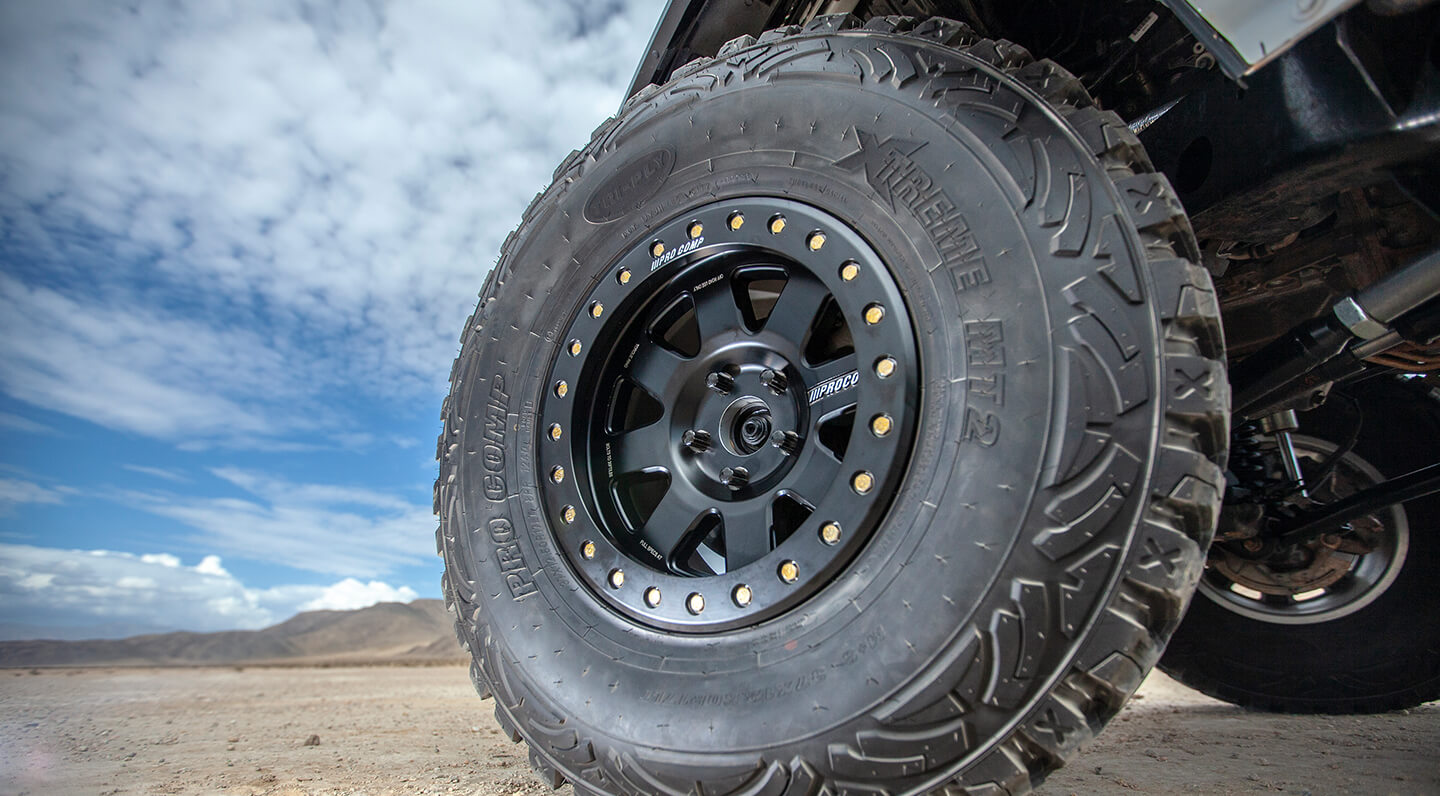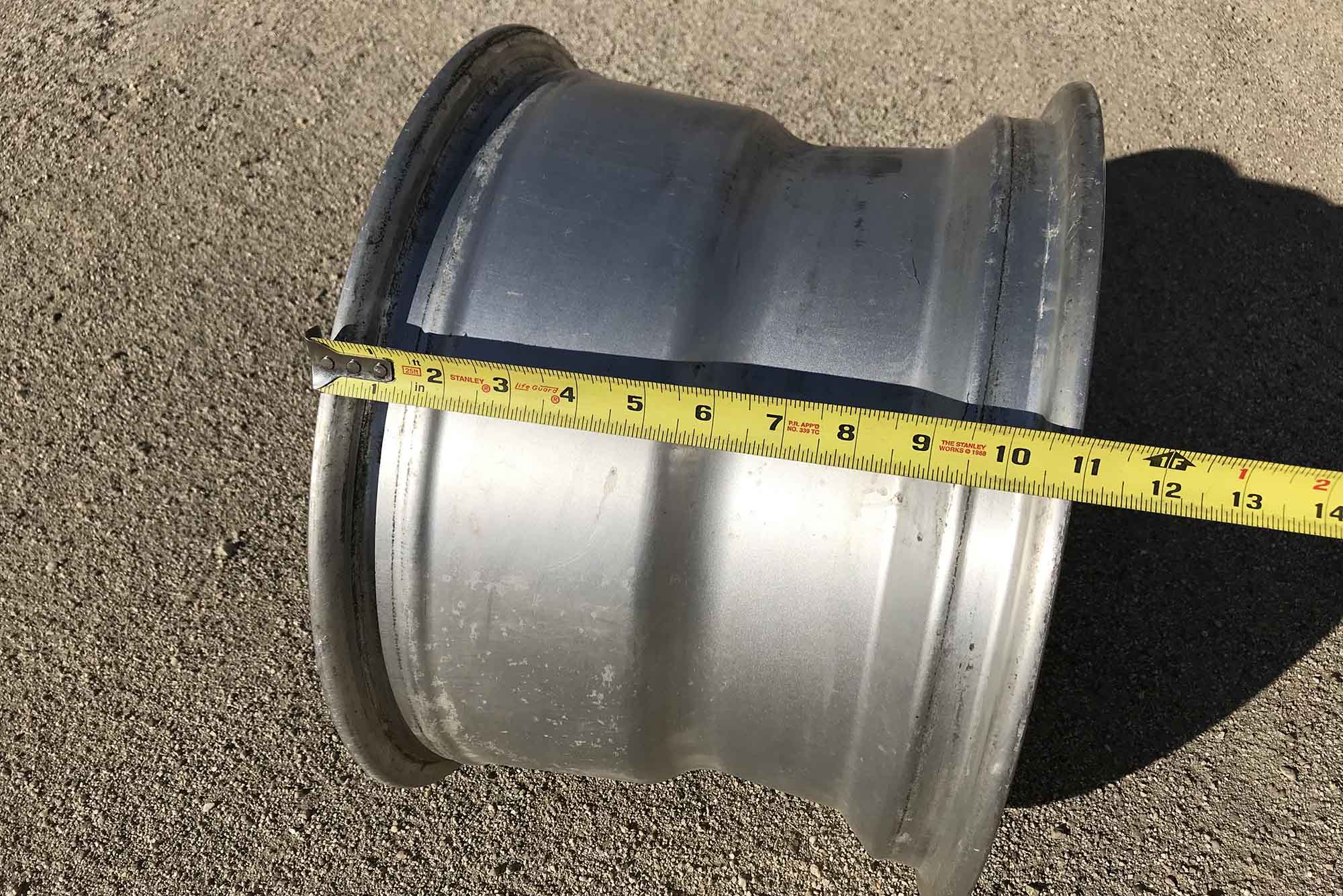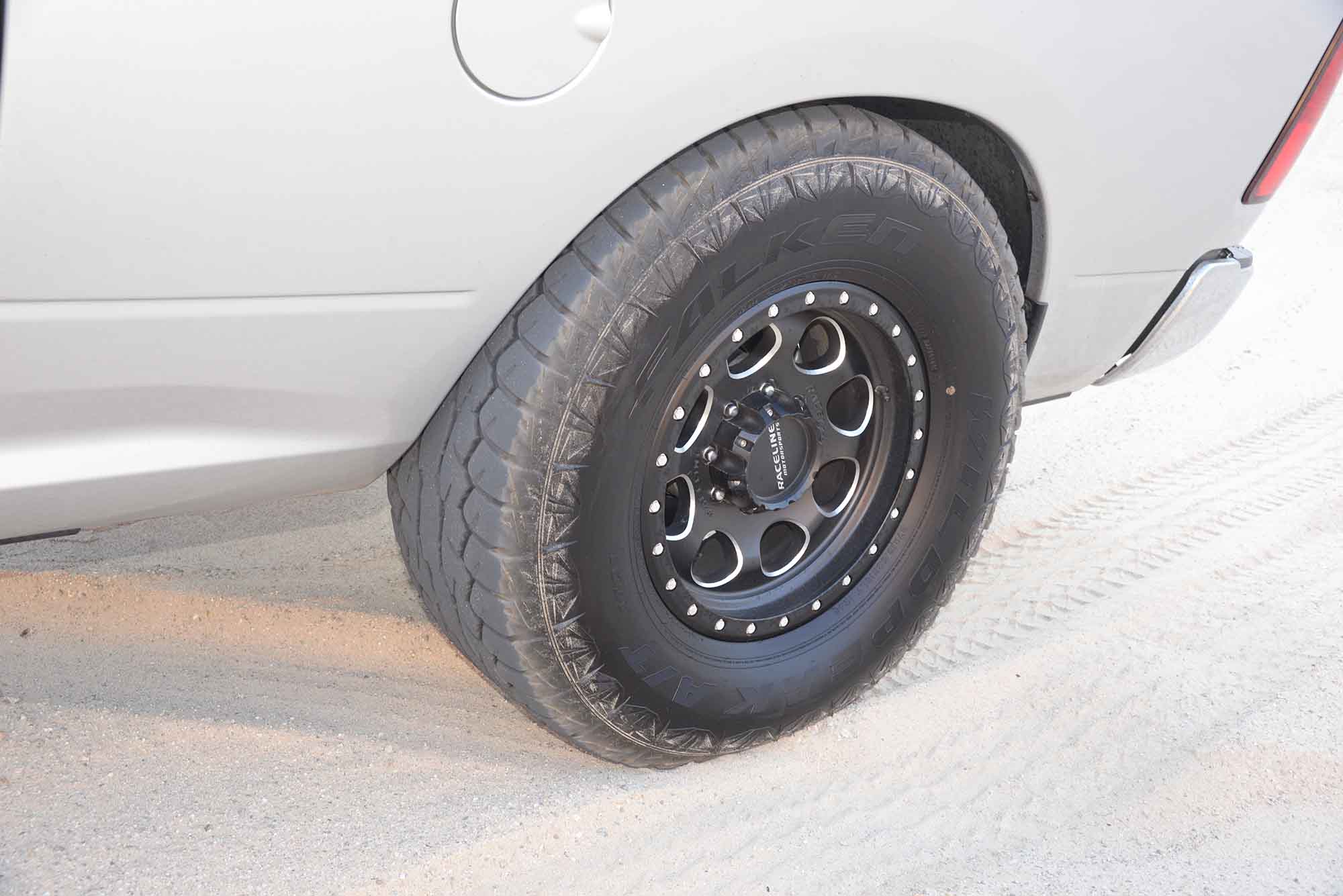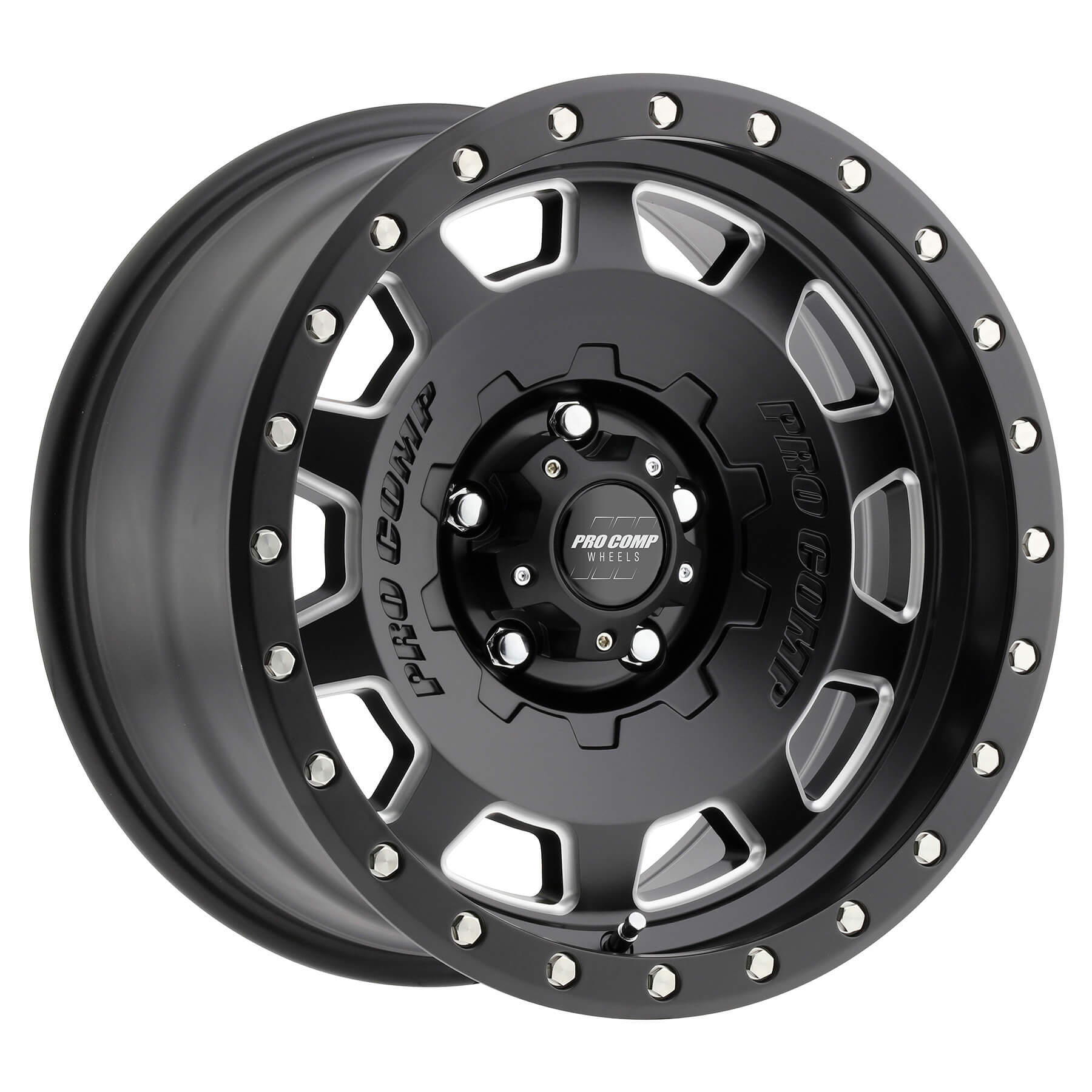
Two of the most widely misunderstood, misused and incorrectly interchanged terms in the aftermarket 4×4 wheel world are wheel backspacing and wheel offset. They both relate to the location of a factory or aftermarket wheel on the wheel mounting surface of your 4×4, but as a 4×4 enthusiast only one truly matters to you. If you don’t know which one that is, this story is for you.
You probably scoured over numerous web pages and catalogs before purchasing your first set of new wheels. If you’re like most 4×4 enthusiasts, you likely spent the majority of your time looking for a wheel design that caught your eye. Once you found your wheels, you expected them to be available in the right size and lug pattern. If they were not, you had to start your search over again. What you may not have known during your search is that the correct wheel backspacing is just as important. The right backspacing can mean the difference between your new wheels and tires fitting cleanly, rubbing occasionally, or not even fitting over your brakes and suspension. Read on to learn what you need to know about backspacing and offset. And for a full story on everything you need about wheels follow the link here.

Measuring wheel backspacing is easy to do on the backside of a wheel with a straightedge and tape measure. The measurement is taken from the wheel mounting surface to the outermost edge of the wheel as pictured. Measuring offset is much more difficult.
What Is Backspacing?
Wheel backspacing is the measurement from the hub mounting surface of the wheel to the outermost edge of the wheel. Backspacing is typically measured in inches. More backspacing means the wheels are pulled in closer to the brakes and suspension. Less backspacing means the wheels are pushed out away from the brakes and suspension. Most newer 4x4s have factory wheels that are 6-8 inches wide with a backspacing measurement between 4-6 inches. Aftermarket 4×4 wheels are generally more than 8 inches wide and will often utilize a backspacing measurement that is about 1 to 2 inches less than the factory backspacing. The less backspacing pushes the wheels more outward than stock. Aftermarket wheel manufacturers typically try to produce wheels that can fit a variety of 4×4 vehicle applications. Reduced backspacing is one of the features that allow for this.
In some cases, aftermarket suspension manufacturers are very specific about the wheel backspacing required for a particular lift kit. This requirement is especially true on independent front suspension applications where an A-arm could make contact with a wheel that has too much backspacing. Always read the instructions for your suspension lift kit before falling in love with and purchasing wheels for your 4×4. Keep in mind that you also don’t want too little backspacing. A backspacing measurement of 2 to 3 inches on a 10 to 12-inch wide wheel might give your 4×4 the wide stance and the deep-dish wheel look you want. But this combination can lead to unpredictable darty steering and other handling quirks, especially on rough roads. When wheel shopping, it’s always a good idea to let the 4 Wheel Parts salesman help you match the correct wheel backspacing to your application.

There isn’t an easy or accurate way to measure the offset of a wheel. However, you could subtract the backspacing measurement from half of the wheel width and get close. A negative difference indicates a negative offset, while a positive difference indicates a positive offset. Zero difference indicates a zero offset.
What Is Wheel Offset?
The offset of a wheel is the measurement from the hub mounting surface to the centerline of the wheel. A wheel can have a zero, positive, or negative offset measured in millimeters. A zero offset wheel has the hub mounting surface at the centerline of the wheel. A positive offset wheel has the hub mounting surface positioned in the front half of the wheel, closer to the wheel face. This positive offset tucks the entire wheel and tire assembly in toward the brakes and suspension. Negative offset wheels have the opposite effect moving the wheel and tire assembly out and away from the brakes, suspension, and body.
Almost all aftermarket 4×4 wheels that are 9 inches wide or wider have a negative offset. They are typically wider than stock wheels to accommodate wider and larger diameter tires. Having zero or positive offset will usually cause the wheel to make contact with the brakes, suspension, or steering components. However, some axle and suspension designs do make use of positive offset wheels. But like most 4×4 applications, they generally utilize a backspacing measurement rather than an offset measurement for fitment.

Most aftermarket off-road wheels have between 3.5 and 5 inches of backspacing. A wheel with more backspacing will tuck under the fenders better than a wheel with less backspacing. Also, too little backspacing can cause darty steering and other handling issues.
Why Is Backspacing More Important Than Offset?
Ideally, when buying aftermarket wheels, you can find some that have the required backspacing you need for your 4×4 and the same offset as stock. But this isn’t very likely. Most of us are upgrading to taller and wider tires that require wider wheels too. When adding wider than stock wheels to your 4×4, retaining the factory offset becomes near impossible. Keeping a factory-like offset with a significantly wider wheel than stock would generally require a completely unusable backspacing. That backspacing would cause the wheels to rub all over the brakes, steering, and suspension before the wheel mounting surface could be cinched down to the bearing hub with lug nuts. The 4×4 industry typically uses wheel diameter, width, lug pattern, and backspacing as the go-to measurements when fitting aftermarket wheels on a 4×4. At this point it’s become an industry standard, although there are some minor exceptions. For that reason, backspacing is the more important measurement.

If the wheels you’ve decided on have too much backspacing, you can usually compensate an inch or two with wheel spacers. Companies such as G2 Axle & Gear offer wheel spacers for many popular applications.
Is There A Cure If the Backspacing On A Wheel Is Wrong?
If you have fallen in love with a wheel that meets all of the other parameters for your project except backspacing, you’re not entirely out of luck. If the wheel only has an inch or so too much backspacing, you could always make use of wheel spacers. Some 1-inch wheel spacers could be used to effectively turn your unusable wheels with 5.5 inches of backspacing into wheels that fit with 4.5 inches of backspacing. Unfortunately, no magic in the world can turn a wheel with too little backspacing into a wheel with more backspacing. Although, if you can live with the extra track width and handling quirks, at least the wheels can still be used on your 4×4.




2